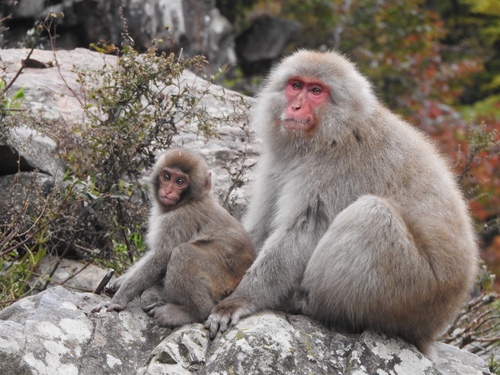
Japanese macaque
The Japanese macaque, or snow monkey, thrives in Japan’s frigid mountains. Notable for its thick fur and social behavior, it famously bathes in hot springs to endure icy winters, showcasing its unique adaptation to harsh climates.
25-32 years
Lifespan
45426.0 kg
Weight
Height: 80 - 95 cm
Size
Brown, Grey
Color
4-5 years
Age of Sexual Maturity
20 months
Age of Weaning
Least Concern
Conservation Status
Stable
Population Trend
Characteristics
Macaca fuscata, commonly known as the Japanese macaque or snow monkey, is native to Japan. They are known for their thick fur, which allows them to thrive in cold climates, including snow-covered mountains. These monkeys are highly social, living in troops with complex hierarchies, and are famous for bathing in hot springs to stay warm during winter months.
Distribution Range of the Japanese macaque
Macaca fuscata, commonly known as the Japanese macaque or snow monkey, is native to Japan. Its geographical distribution includes the main islands of Honshu, Shikoku, and Kyushu, as well as several smaller islands. The species is notably absent from Hokkaido.
Japanese macaque's Habitat
Environmental Conditions
Japanese macaques inhabit a variety of environments, ranging from subtropical to subarctic climates. They are found in deciduous, evergreen, and mixed forests, often at elevations from sea level to mountainous regions. The climate in these areas can vary significantly, with cold, snowy winters and warm, humid summers.
Ecological Niche
Japanese macaques are highly adaptable and occupy diverse ecological niches. They are primarily terrestrial but are also skilled climbers and swimmers. Their diet is omnivorous, consisting of fruits, seeds, leaves, insects, and small animals, which allows them to thrive in different forest types. Seasonal changes influence their diet, with snow covering the ground in winter forcing them to rely more on bark, buds, and other available resources. This adaptability to varying environmental conditions supports their survival across different habitats.
Copyright @ Nature Style Limited. All Rights Reserved.
 English
English